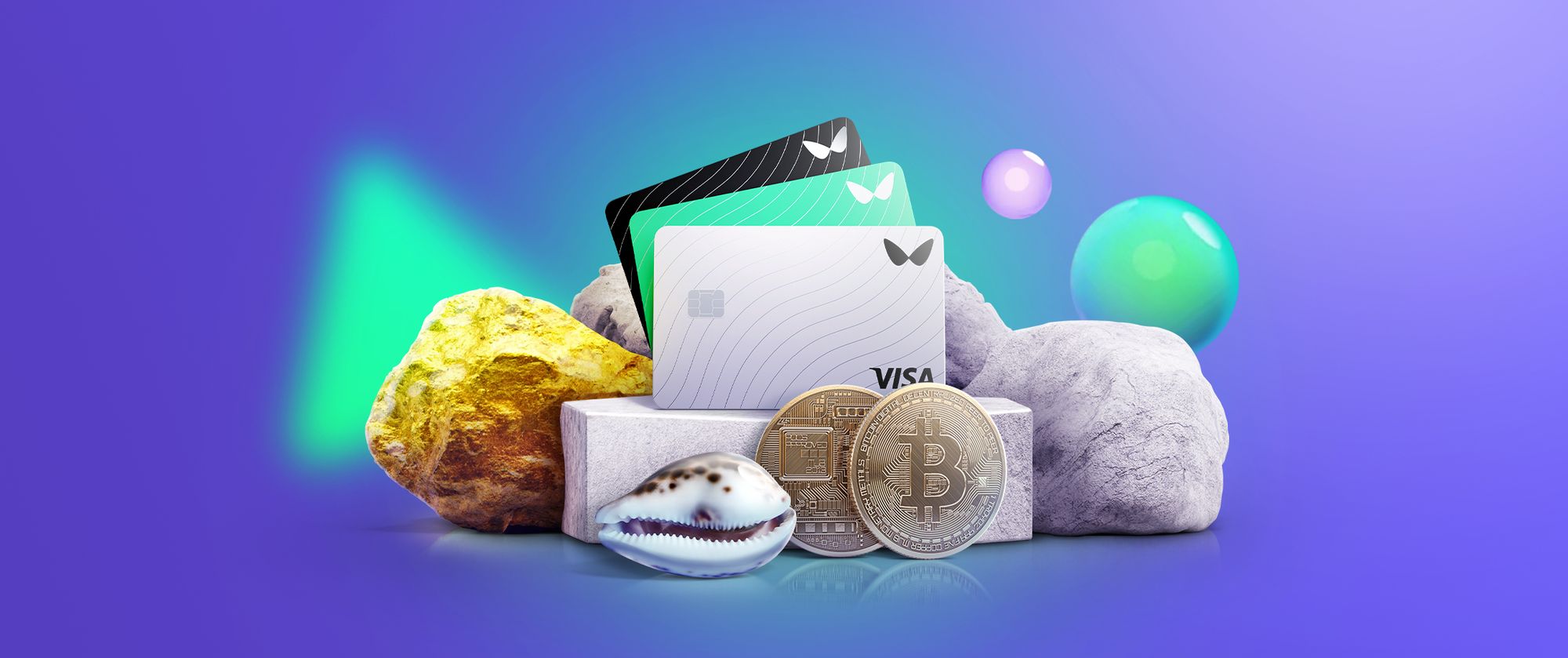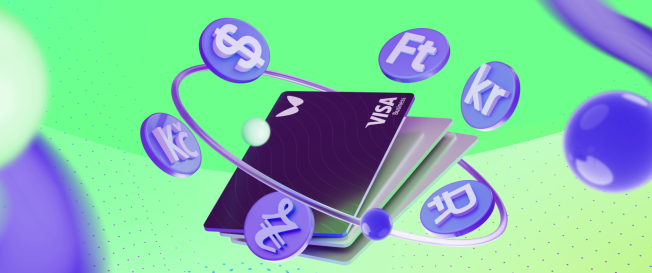If you want to succeed as an entrepreneur, it’s crucial to have a solid understanding of money management. In this series of articles, we’ll explore the history of currency from ancient times to the present day. By learning more about money, currencies, payments, and finance management, you’ll be able to maximise your wealth with the help of Wallester.
The Evolution of Money: From Barter to Cowrie Shells
Money is a means of fair trade, where goods and services are exchanged for payment between individuals or companies. The concept of a medium of exchange first arose when people began to cooperate with one another. For example, if someone was a skilled hunter but lacked the ability to make weapons, they could exchange an axe with a weapon maker in return for a mammoth. However, if they couldn’t find anyone willing to trade hunting services for an axe, they needed something universal to use as an exchange medium.
During the period between 9000-6000 BC, humans engaged in the practice of cattle trading. Subsequently, with the emergence of agriculture, trading activities expanded to include crops such as wheat, rice, and other plant-based products.
Cowrie shells, which are found in the Pacific and Indian Oceans, were used as currency in China in 1200 BC. This practice was not exclusive to China, as many other societies throughout history also used cowries as a form of exchange. Some African regions continued to use them until the mid-1900s. The cowrie shell is considered the most widely and consistently used currency in human history.
From 1000 BC, people from the Zhou dynasty started making metal versions of cowrie shells for easier use.

The first economic system originated in Mesopotamia (c. 3000 BCE), present-day Iraq. The people there created a debt economy, allowing them to exchange grains for clay tokens that could be used to pay for temple fees or debts. The Mesopotamians developed an accounting system that used asset-backed credit or representative money, representing more value than it actually was. The temple recorded the farmer’s grain deposit on clay tablets and issued a clay token as a receipt for payment of debts or temple fees. They counted a specific weight of barley, which became the foundation for the currency known as the Shekel.
The Transformative Power of Currency: From Precious Metals to Fiat Money
In the past, the Temple had complete control over the market and set the exchange rate for foreign trade. Initially, copper was the preferred currency for trading grains, silver, and other valuable commodities. However, over time, silver became more popular for trading. Traders had to keep track of how many goods they sold, so trading for silver or other precious metals required auditing, calculating, and writing, which helped improve the educational level. When trading began to involve precious metals, traders sought a specific person to make a fair exchange. Typically, both parties would sign a contract on a clay tablet with the help of a specially trained scribe who recorded basic information and their signatures or stamps.
As civilisations progressed, the concept of money continued to evolve, paving the way for the modern currency we use today. While Aristotle’s theory of money emphasised money’s intrinsic value and function as a medium of exchange, subsequent developments further shaped its transformation.
During the Middle Ages, using precious metals as a standard form of currency persisted, with gold and silver coins circulating in various regions. However, as trade expanded and economies became more complex, the need for a more standardised and universally accepted medium of exchange became apparent.
In 1464, Luca Pacioli, an Italian mathematician and collaborator of Leonardo da Vinci, made a groundbreaking contribution to the accounting field by introducing the double-entry accounting system. This innovative method, outlined in his book “Summa de Arithmetica, geometria, proportioni et proportionalità,” revolutionised financial record-keeping by incorporating both debits and credits to ensure accuracy and transparency. Pacioli’s partnership with da Vinci was pivotal in popularising this system, leading to its widespread adoption throughout Europe.
Even today, the double-entry accounting system remains an indispensable framework utilised by businesses across the globe, providing a solid foundation for managing and understanding financial transactions.
Consider using Wallester Business, a modern solution to streamline your corporate expense management. With Wallester, you can issue unlimited virtual and physical cards. The first 300 virtual cards are free of charge, and there are no fees for maintenance.
The Renaissance era witnessed significant advancements in banking and finance. In response to the growing demand for secure and convenient forms of payment, banking institutions began issuing paper money backed by reserves of gold and silver. This marked a crucial shift towards representative money, where paper notes represented a claim on the underlying precious metals.
The New Era of Currencies: Physical to Digital
With the industrial revolution and the rise of global trade, the complexity and scale of economic transactions increased exponentially. In the late 19th and early 20th centuries, fiat money emerged as the dominant form of currency. A physical commodity like gold does not back fiat money but derives value from government decrees or legal tender laws.
Today, our modern monetary system relies heavily on fiat money, which is issued and regulated by central banks. It takes the form of banknotes and electronic credits, facilitating transactions on a global scale. Furthermore, the rapid advancement of technology has given rise to digital currencies and decentralised cryptocurrencies like Bitcoin, which offer alternative modes of exchange outside traditional financial systems.
The history of money is a testament to humanity’s constant innovation and adaptation in facilitating economic transactions. From the use of precious metals to representative money and the emergence of fiat and digital currencies, money has evolved to meet the changing needs of societies.
As we move forward, the ongoing development of financial technology and the exploration of new economic models will undoubtedly shape the future of money
We will be happy to meet and discuss your business case and how we can help.
Please feel free to contact us.
We’re here to assist you 🙂


